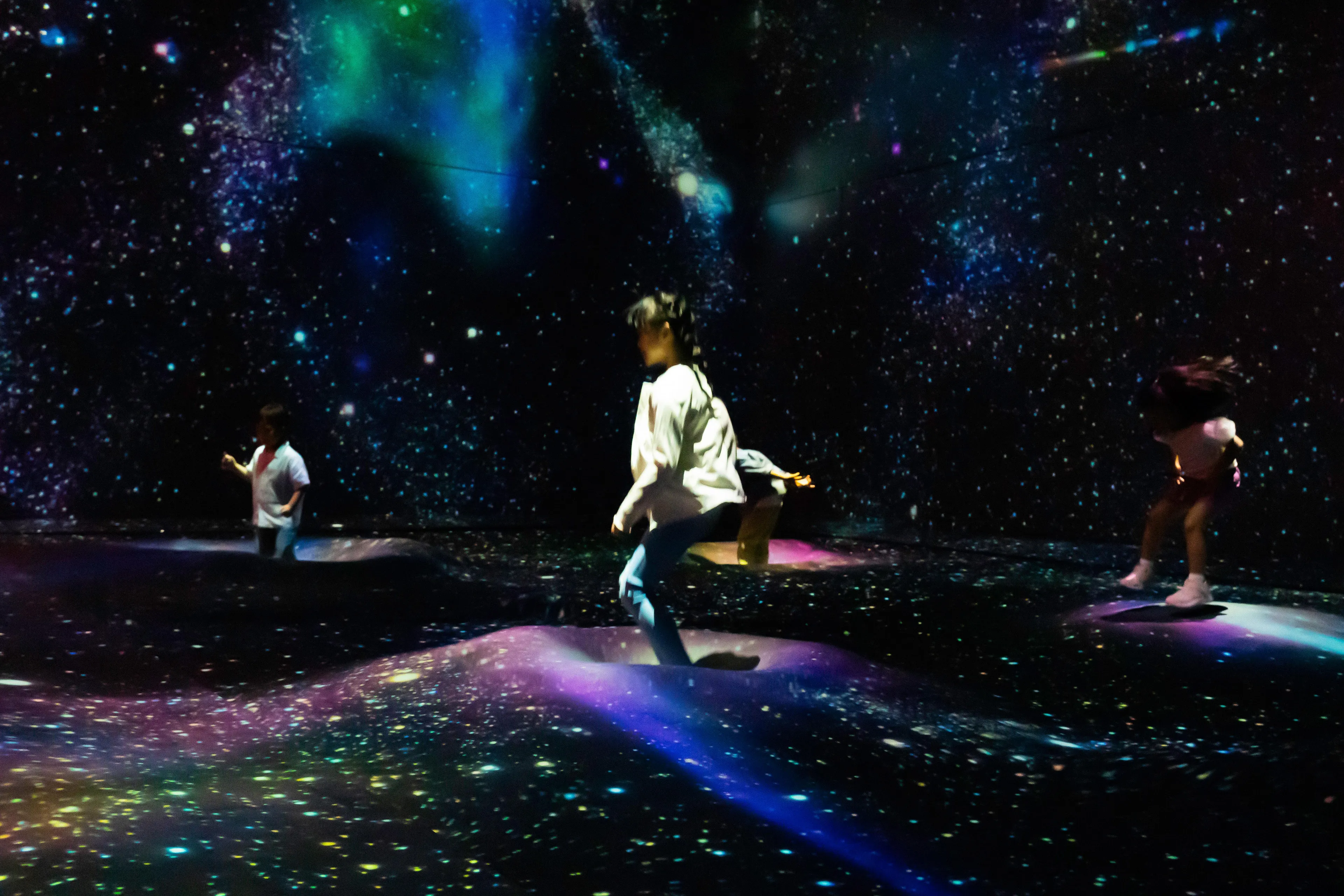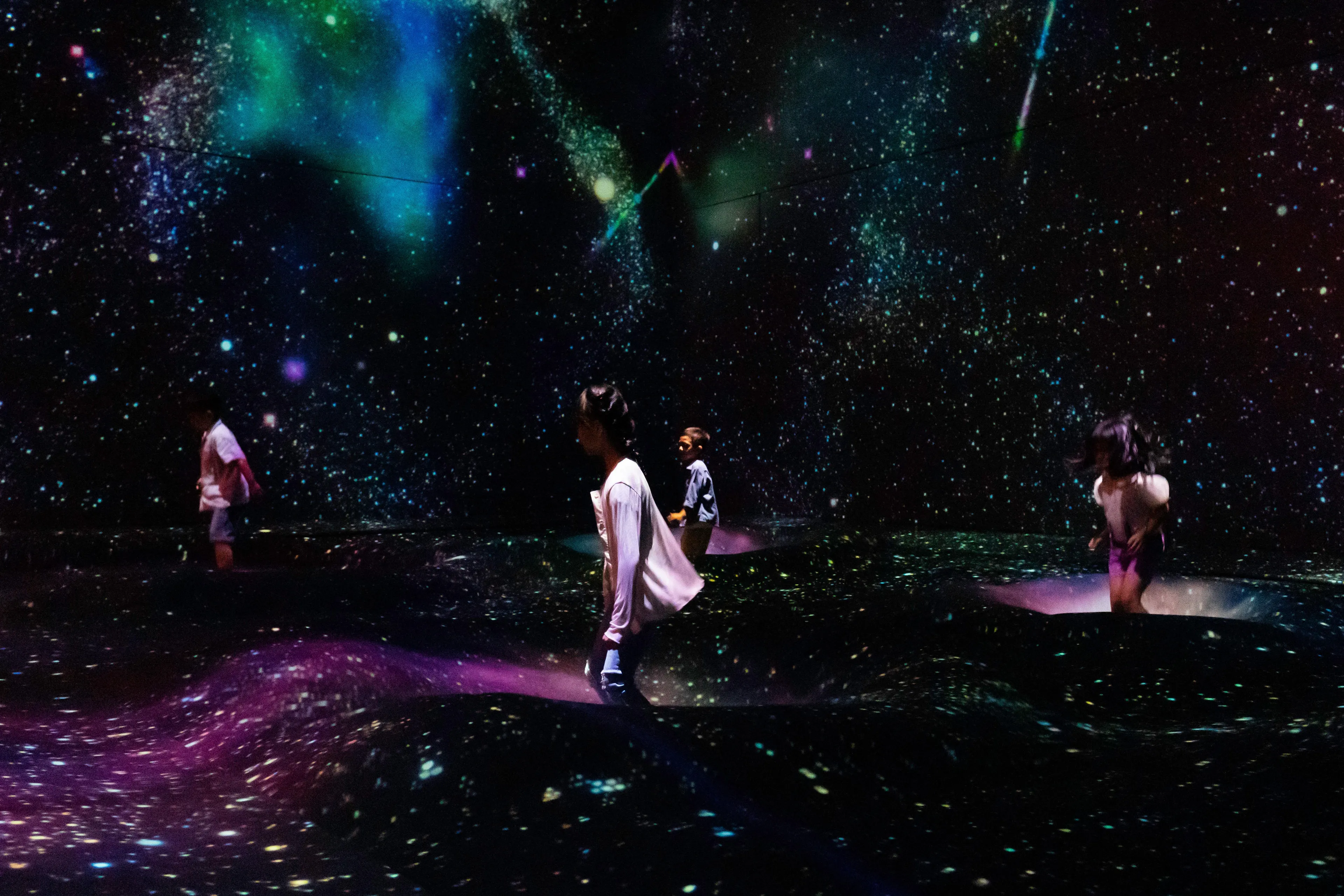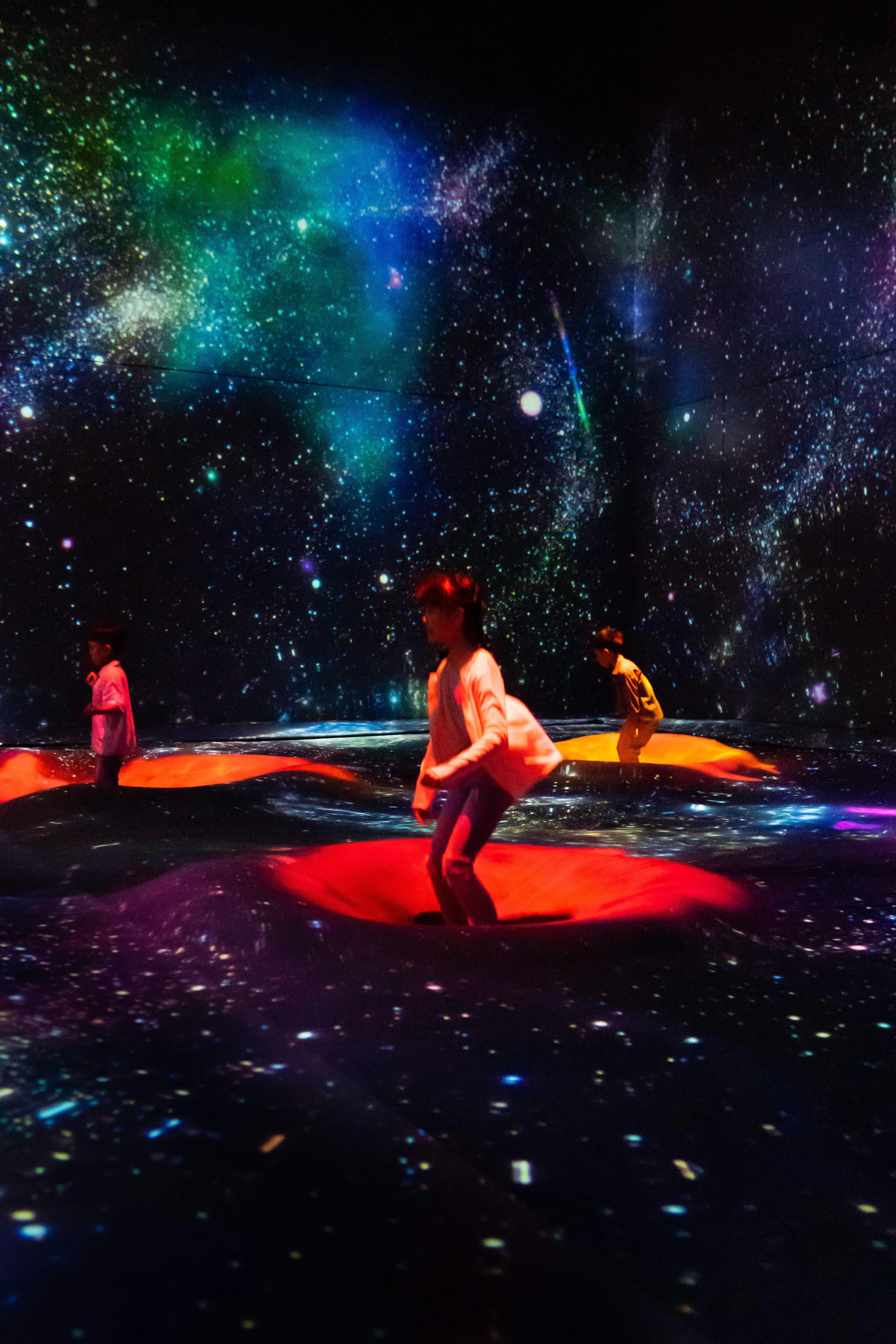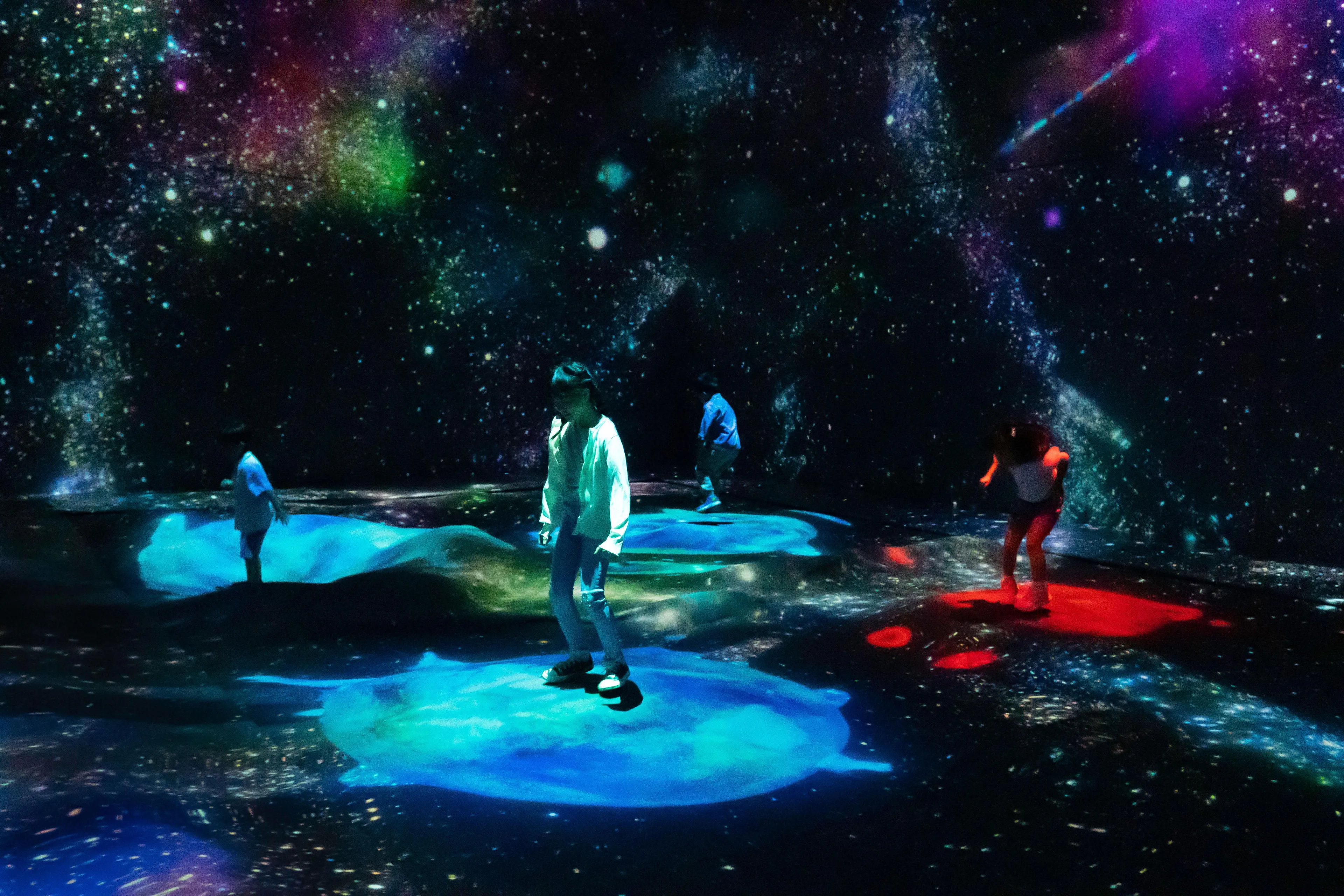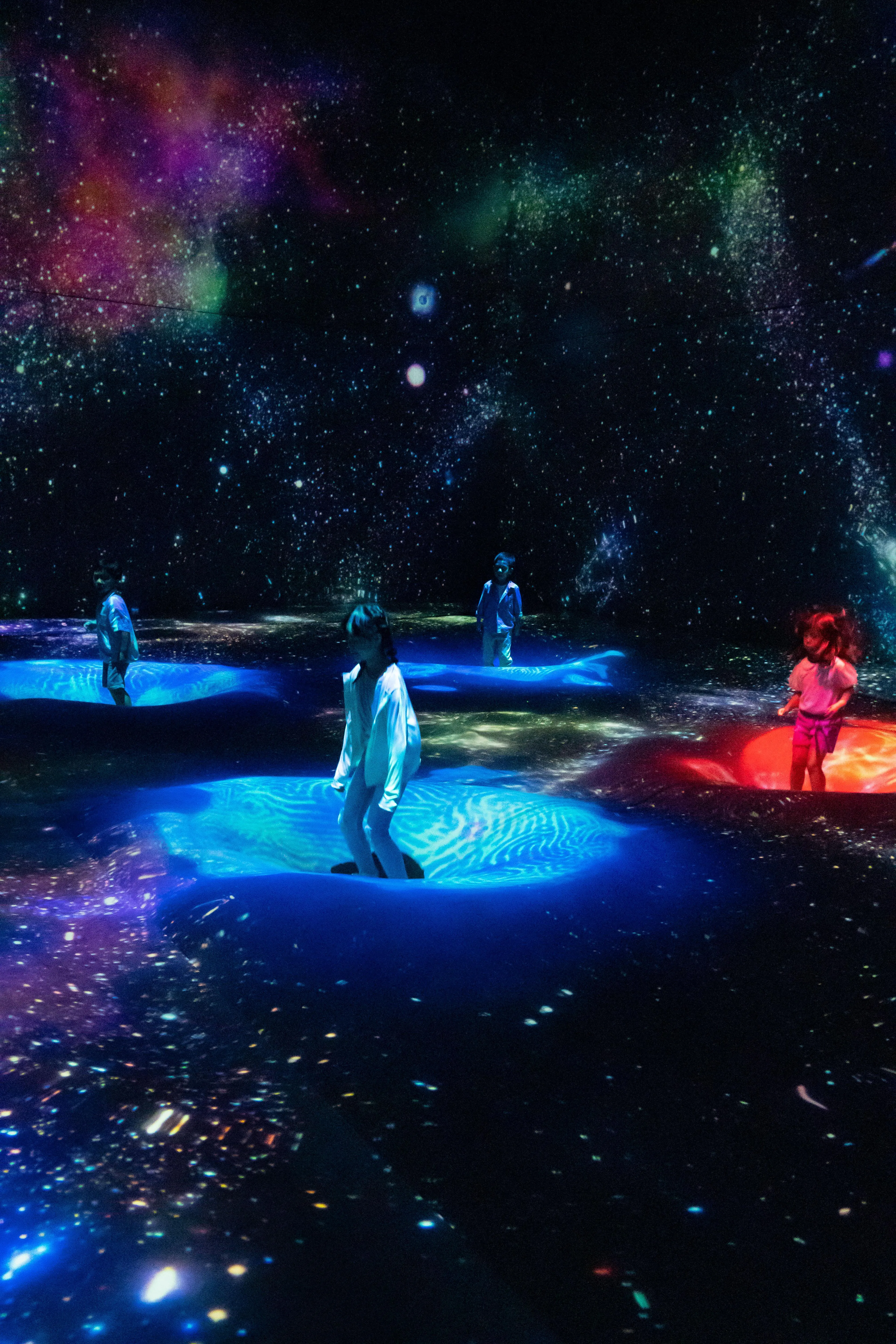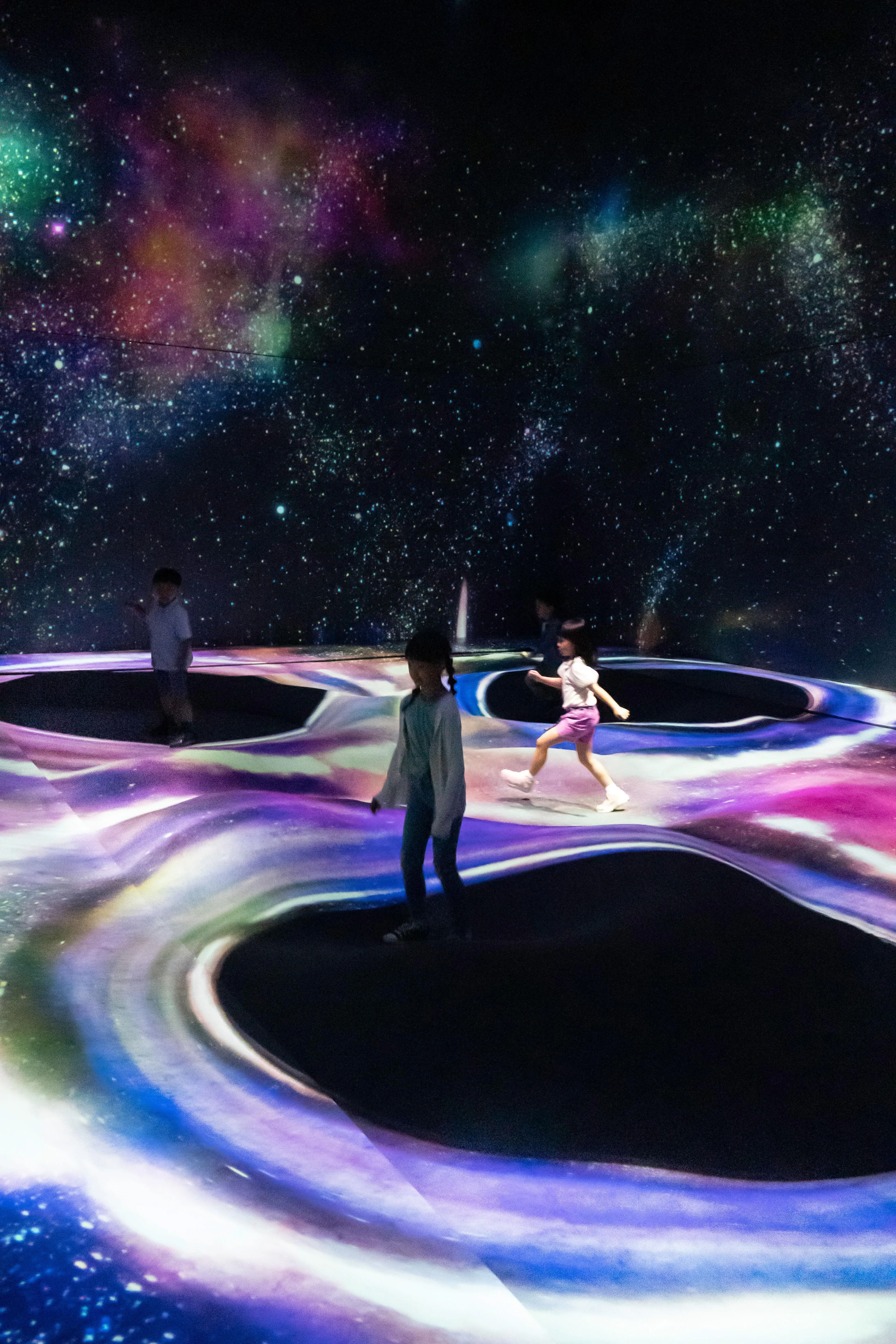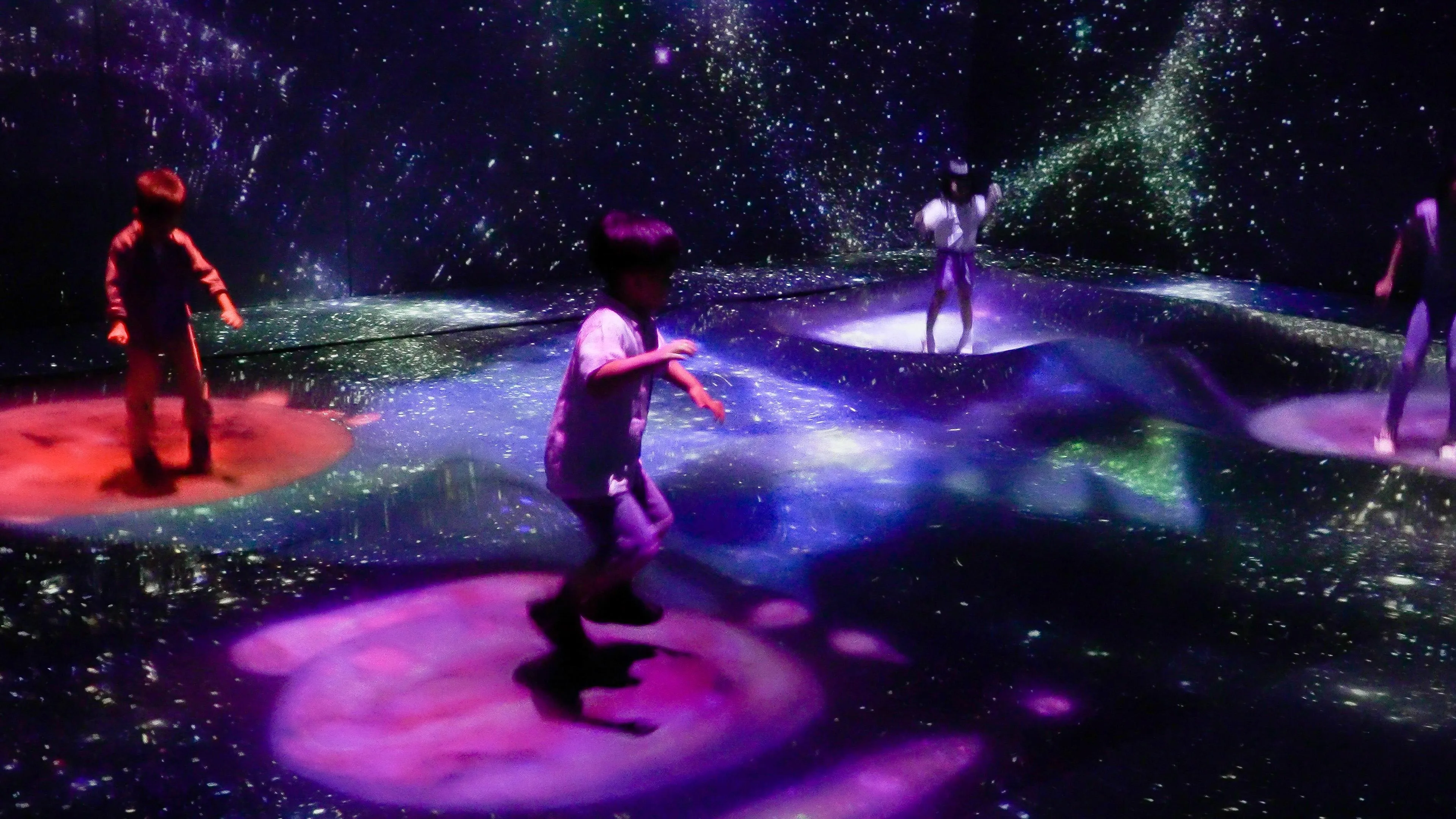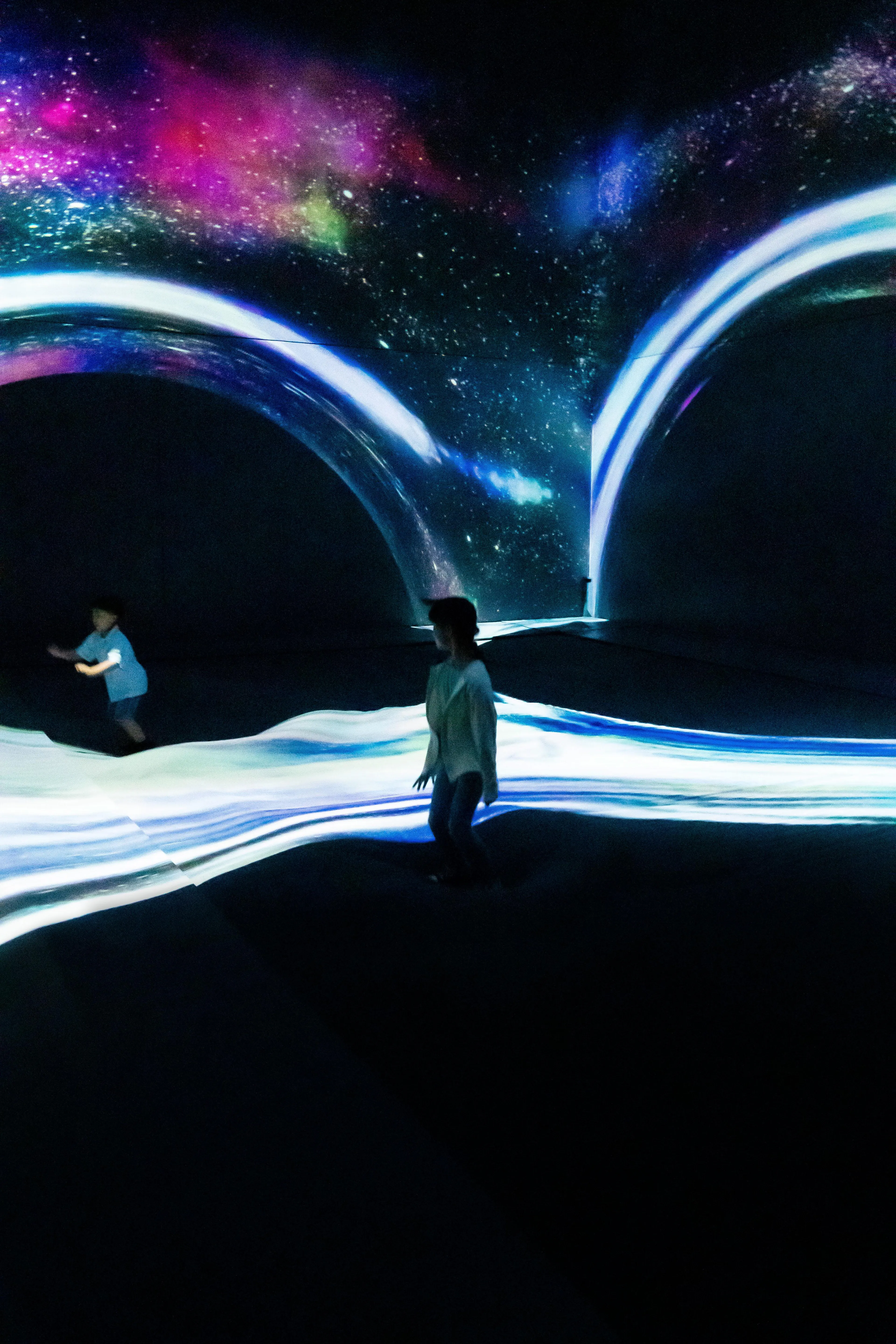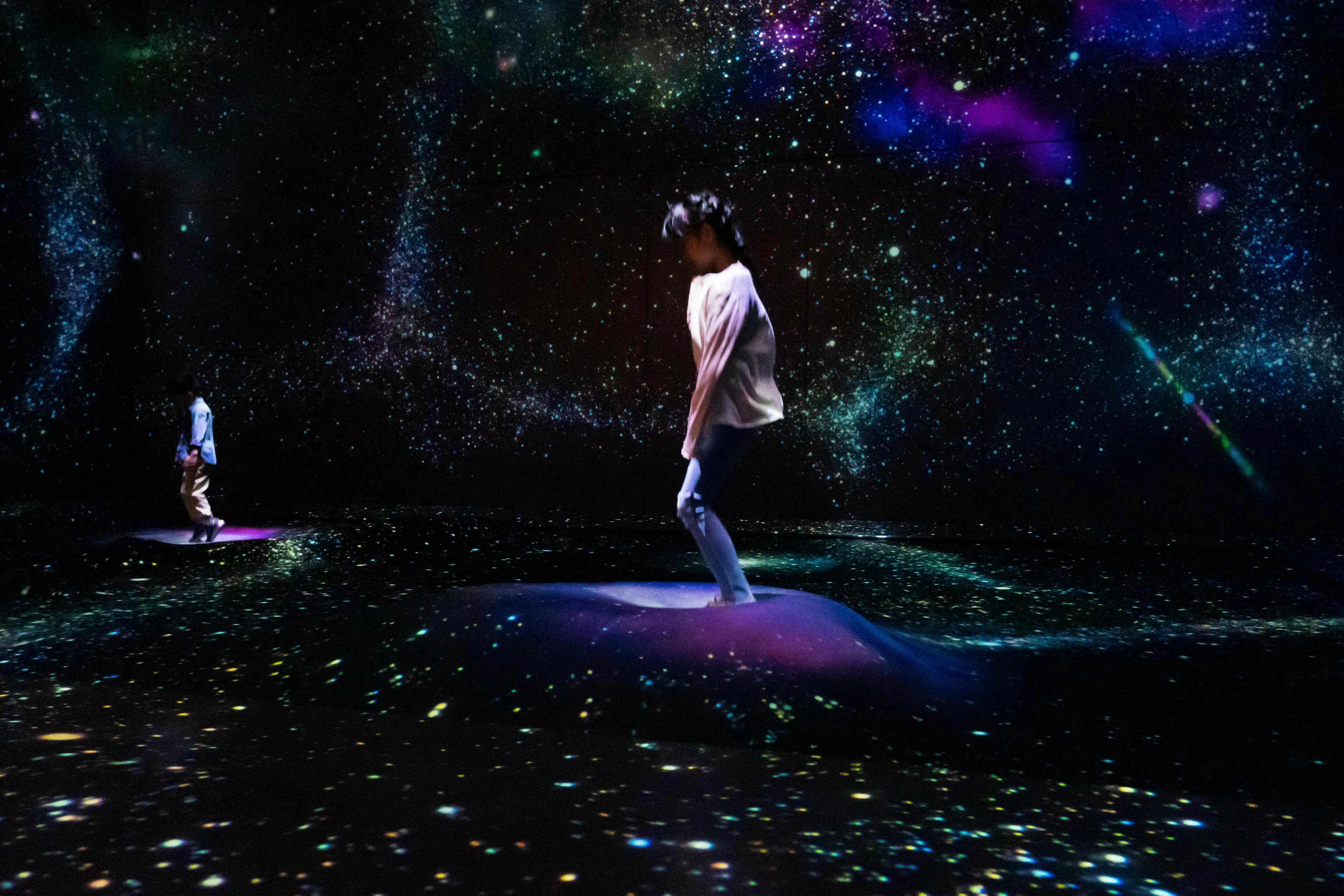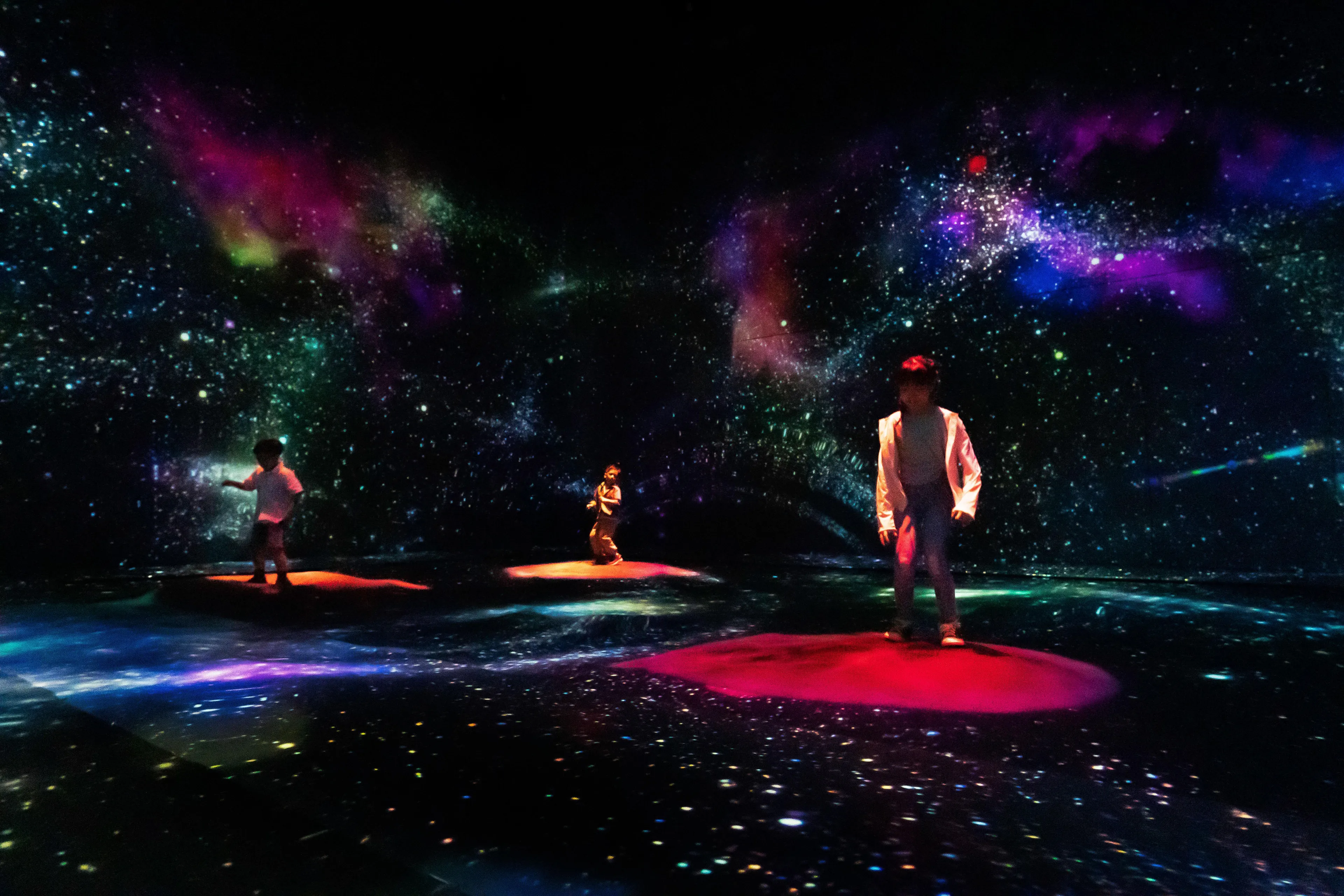Multi Jumping Universe
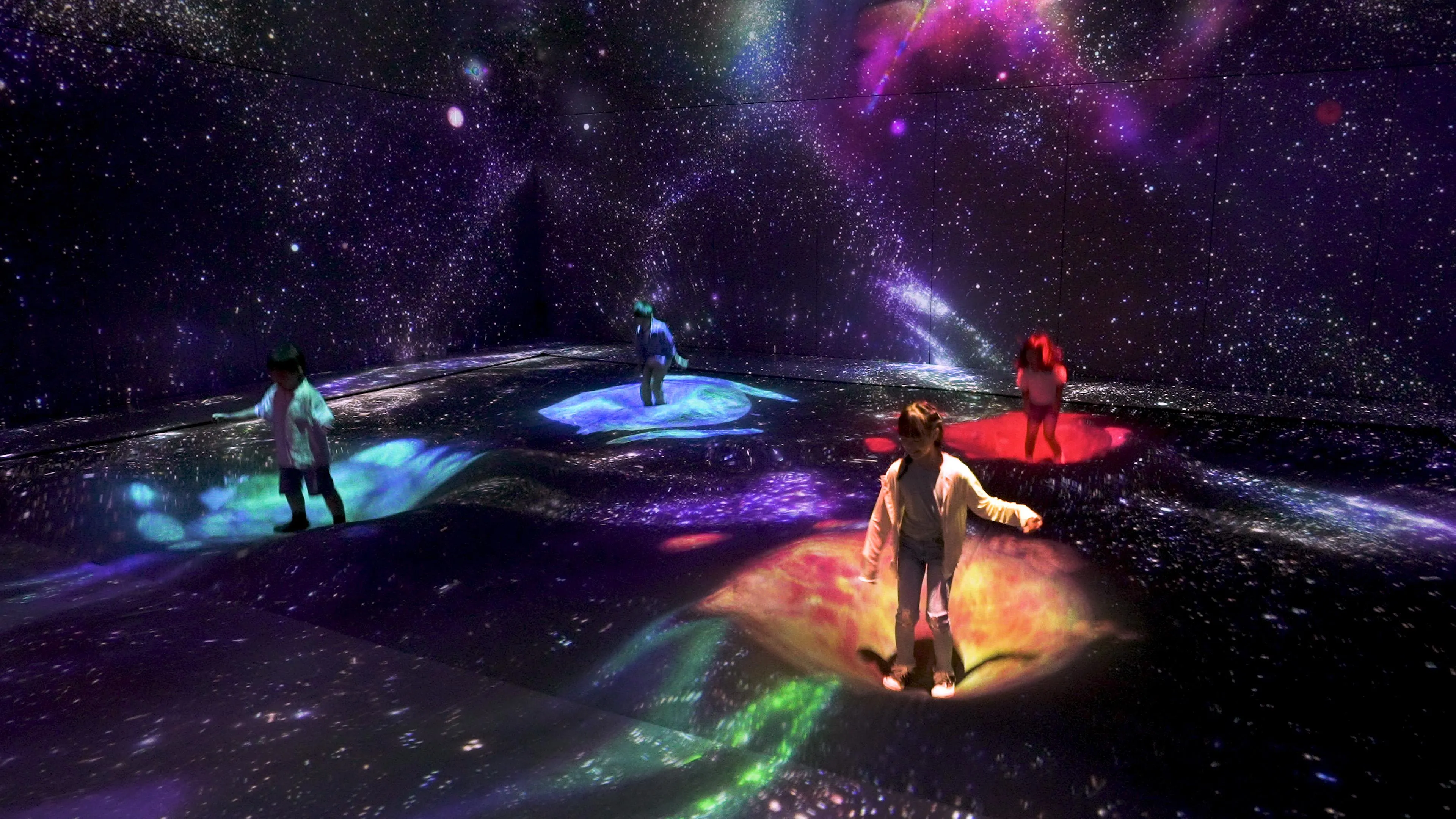
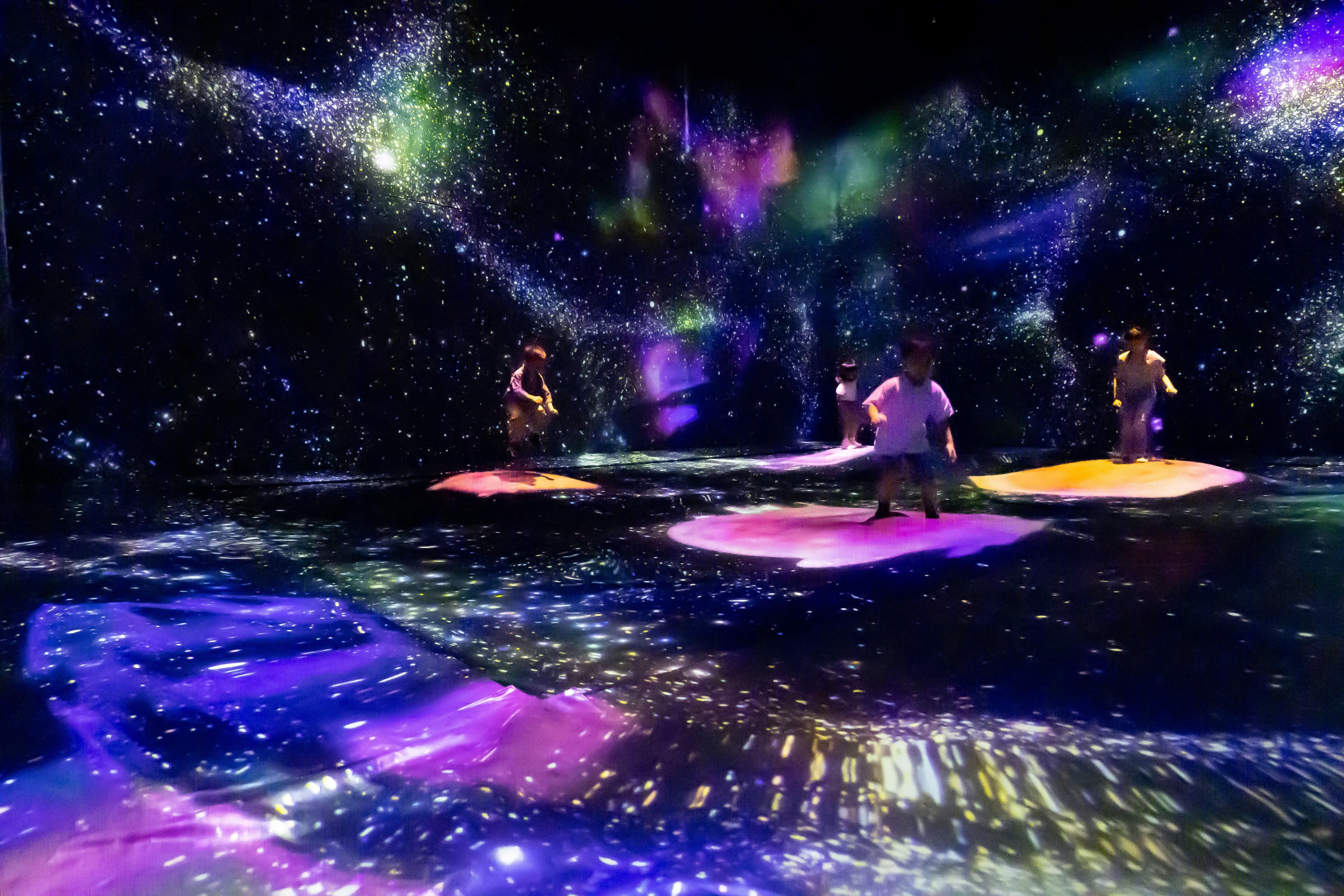
Multi Jumping Universe
Multi Jumping is a flexible surface that multiple people can jump on at the same time, and sink or jump higher than usual.
When you stand on Multi Jumping, the surface beneath your feet sinks, creating warps in space and time. This distortion attracts stardust from the universe and births new stars. If you continue to jump on a star, the star will grow. When the life of the star ends, it returns to stardust and becomes the building blocks of new stars.
A gigantic and heavy star will eventually become a black hole that swallows up all the surrounding stars and stardust.
Background of Artwork
Lifecycle of a Star
Like the sun and the twinkling stars in the night sky, stars which generate their own light are called “fixed stars”. There are various types of stars in the universe; “planets” like the Earth we live on, and “natural satellites” such as moons which revolve around them, but here we are going to talk about the “fixed stars”.
A large factor in the life of a fixed star is “gravity.” According to Einstein’s theory, in space, objects with mass cause a distortion in space-time. The force that causes surrounding objects to be pulled toward this distortion in space-time is called “gravity.”
Birth of a Star
Evolution of a Star
Death and Rebirth of a Star
